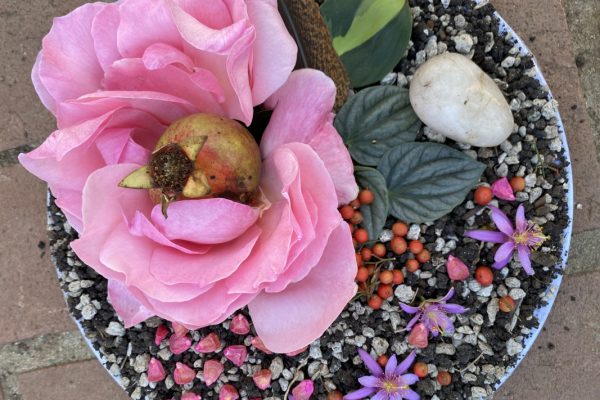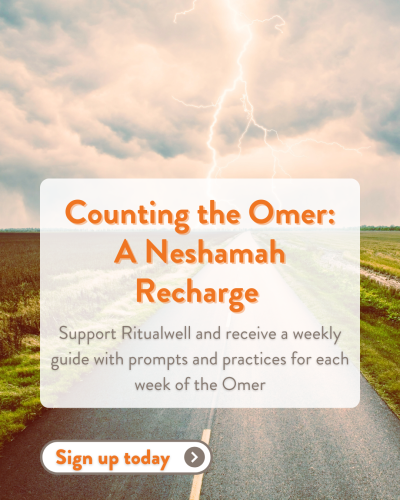A Note About the Limitations of this Ritual:
Not all who menstruate and go through menopause are cis women; trans men and those who identify as non-binary may experience both of these as well. This ritual, however, is written from the perspective of a cis woman and its language will likely be most relatable to cis women. If the words of this ritual do not speak to your experience of gender, and no other ritual is available, you are encouraged to use the basic structure of this one to create a ritual that will be meaningful for you.
Similarly, this ritual addresses the menopausal experience of the average woman with a normal health history. Many women are forced into early menopause because of cancer treatment or other health concerns. Again, you are encouraged to use what is here as it fits your experience and to create your own where it does not.
When to Use this Ritual:
While other rituals around menopause may be applicable at many different points along the transitional timeline (perimenopausal years, early menopause, post-menopause, etc,) this ritual is specifically intended for marking the end of the 12-month absence of menstrual bleeding after which a woman is considered officially menopausal. As that particular moment in time is different for each woman, the ritual is intended to be done individually. While others may be present to support or honor the woman participating in the ritual, it is not intended to be a group ceremony.
Setting Up
Some of what you are asked to do here will feel like it meets your needs, while some of it may not. You are invited to be flexible in this ritual—to expand on things that feel resonant, and to skip or amend things that don’t. This is a time for YOU.
It will be important to create for yourself a sacred space. Just as we hold Shabbat services in a sanctuary, and just as the Israelites wandering in the desert created a portable Mishkan in which serve God, your marking of this time deserves a special setting. Choose a space that feels important to you—in a garden, in a quiet room, under a tree. You should also be as comfortable in your body as possible. This might mean wearing cozy pajamas, a flowy dress, or being completely naked. Your chosen setting and clothing (or lack thereof) should feel special and holy.
Have with you the following objects: a pad of paper and a writing utensil, this printout, something to play recorded music on (a smartphone is fine), a bowl of water, a candle and something to light it with.
Steps of the Ritual
Remembering the Beginning of this Menstruation Journey
Begin by sitting in a comfortable position, either on the ground/floor, on a cushion, or in a chair. Play a song on your device (chosen in advance) that you loved at the age you first began menstruating. Close your eyes and listen. Notice what the song evokes in you, what memories and feelings. See if you can picture yourself at that age. What did your body look like? As you listen to the song, allow your mind to carry you back. Give appreciation for the girl you were then.
Read out loud the following excerpt from Anne Frank’s diary:
“Whenever I get my period (and that’s only been three times), I have the feeling that in spite of all the pain, discomfort and mess, I’m carrying around a sweet secret…So even though it’s a nuisance, in a certain way I’m always looking forward to the time when I’ll feel that secret inside me once again.” While Anne did not live long enough to become a mother, she is one of our foremothers. By hearing her words in our own mouths, we honor her, the wonderment of those first early periods, and our own girlhood which seems both eons ago and as if it were just yesterday.
Remembering Birthing Ourselves
As we move into this next part of the ritual, we take time to acknowledge who we were in our late 20s and our 30s. Perhaps our menstrual cycles were part of a reproductive journey as we became mothers. Perhaps we chose not to have children, or perhaps we became mothers through adoption or surrogacy. No matter what our relationship to motherhood, those middle menstrual years were ones in which we nurtured our grown-up selves. Our bodies changed and our lives expanded; whether or not we were growing families or careers, we were growing as ever evolving adults.
Rise to your feet and play a song on your device (chosen in advance) that you loved during this time of your life. As you listen, move to the music. What memories and feelings does this music evoke in you? Recall what you looked like in those years. Give appreciation for the woman you were then. When you are done, you may return to a seated position.
The Torah tells us (in Leviticus 15:19) that “when a woman has a discharge, her discharge being blood from her body, she shall remain in her impurity seven days; whoever touches her shall be unclean until evening.” In the Talmud, we learn that a menstruating women (called a niddah) must wait seven “clean days” after the end of her period and then immerse in the mikveh before she is considered pure. Thus, for 2000 years purification in the waters of the mikveh have been a requirement for orthodox women to become pure after menstruating. In the following activity, you will use the water in your bowl, not to seek purity from your years as a menstruant, but to wash away any shame you may have felt over those years for bleeding. Think about the messages you received over the decades of menstruating that told you you were unclean, from TV commercials for wipes, powders, and deodorants, to our very own tradition. Now take the water in your bowl wash your hands, your arms, even your face or feet if you’d like to.
Say the following out loud: With this water, I wash myself clean of the many years of messages I internalized about my period being an embarrassment. I wash myself free of all that cultural and religious shame.
Blessing this Moment
Read out loud:
I arrive at this moment in my life, noting that it has been 12 months since my last period. I participate in this part of the ritual in order to mark this time Jewishly, to celebrate my body, and to honor the array of feelings that I may be having.
Let me begin with a shehecheyanu, in gratitude for reaching this milestone:
בָּרוּךְ אַתָּה יְהֹוָה אֱלֹהֵינוּ מֶלֶךְ הָעוֹלָם שֶׁהֶחֱיָנוּ וְקִיְּמָנוּ וְהִגִּיעָנוּ לַזְמַן הַזֶּה
Blessed are you, ruler of the universe (or source of all being or breath of the world,) who has kept us alive, sustained us, and brought us to this moment.
Honoring Conflicting Feelings
Now take out your paper and writing utensil. Split the paper into two columns and write “What I am grieving” at the top of one and “What I am celebrating” at the top of the other. Set a timer for 2 minutes and during that time, allow yourself to free-write (in a list, stream of consciousness, whatever form… this is just for you) about the things you may be grieving as you say goodbye to menstruation. Now do the same for two minutes for the things you may be celebrating. There is no judgement here—both columns might be full of words, or just one or the other might be. Just allow yourself to be honest about all the things you might be feeling having reached this milestone moment.
Tiferet: Finding Balance
In the Jewish mystical practice of Kabbalah, we learn that God emanates through ten sefirot. The sixth of these ten sefirot is called Tiferet and represents a balance or harmony between the two poles of Chesed (lovingkindness) and Gevurah (limits and boundaries). Let us use this idea of Tiferet, of a balancing between two poles, as a way to sit with the ambivalence that may arise in us as we explore both the loss and the freedom of menopause. On your device, play a song that you are loving right now, and as it plays, let your eyes close and see if you can find that sense of balance within you, between what you are grieving and what you are celebrating about this moment of menopause. Imagine that the grief lives on one side of your body, and the joy lives on the other, and allow that balance to find its home somewhere in the middle of your body. Can you feel it in there? Note what each part of your body feels like: the grief side, the celebratory side, and the balance in the middle.
Conclusion
Put your candle in front of you. In Jewish observance, holy days are marked by the lighting of candles at the beginning of the festival or holy time (sundown.) Why then are we lighting a candle at the end of this ritual? This candle is intended to sanctify the beginning of this new phase of your life. In lighting it, you are honoring the time that stretches before you. Light your candle and say the following out loud:
Blessed are You, breath of all that lives, who houses my soul in an ever-changing body. As I embark on this new phase of my life, let me give thanks for my body, for all of my feelings, and for the unknown that lies before me on my path. Help me to treat my body with love, kindness, and respect as I move through my days.
Close your eyes and listen as all those who’ve ever reached menopause before you answer:
Amen.













